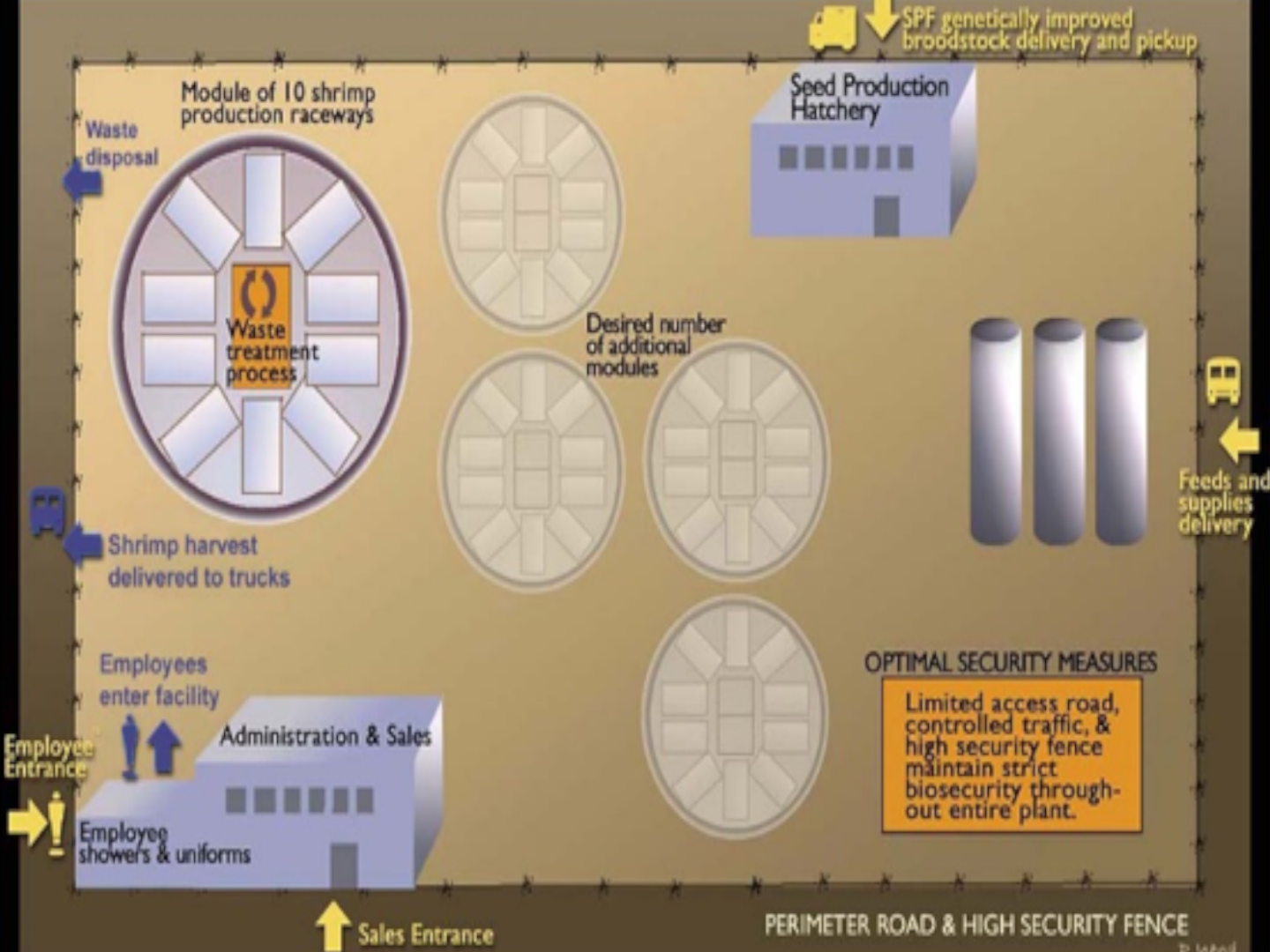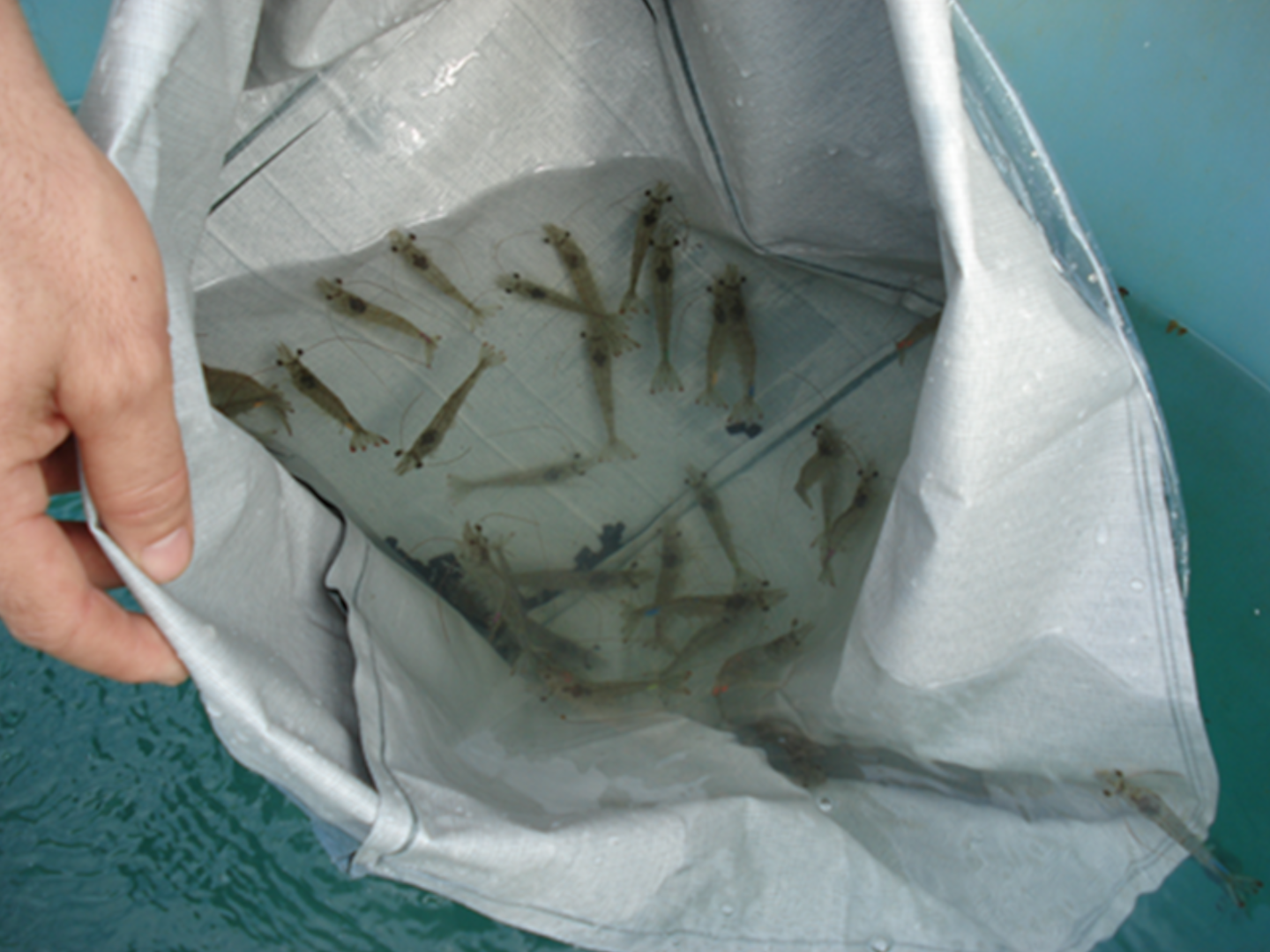
Traditional shrimp farming continues to be plagued with production inefficiencies related to disease outbreaks. In addition, there are environmental concerns associated with traditional farming, such as habitat destruction and the discharge of organic effluent into surrounding coastal waters. To address these challenges, OI researchers have developed Recirculating Aquaculture System (RAS) technology where water is filtered and recirculated to maintain acceptable water quality. Water exchange can be reduced to < 1% per day, thereby minimizing the need for new water and mitigating the introduction of virulent shrimp pathogens into the system.

Concept diagram of OI’s RAS technology associated with a biosecure shrimp farm. Shrimp ponds are indoors to control environmental parameters and reduce disease outbreaks.

Juvenile Pacific white shrimp (Litopenaeus vannamei) bred for rapid growth and high survival in OI’s RAS.
In addition, capture and treatment of solid waste minimizes nutrient and biological pollution of the nearby environment. Stocking densities of > 500 shrimp/m2 (3 to 10 times greater than traditional farms) are possible with OI’s RAS. This allows for a significant reduction in the size of the footprint for the farm and facilitates the implementation of effective biosecurity protocols. Water temperature also can be controlled more easily, thus allowing year-round production during colder months when traditional farms may be unproductive. In addition, RAS can be used to produce shrimp at inland locations away from sensitive coastal areas where multiple-use conflicts exist and at temperate latitudes closer to major markets. OI’s RAS shrimp production technology directly addresses critical environmental and disease concerns and provides a sustainable alternative to traditional farming methods.

Construction of OI’s RAS in Asia.

